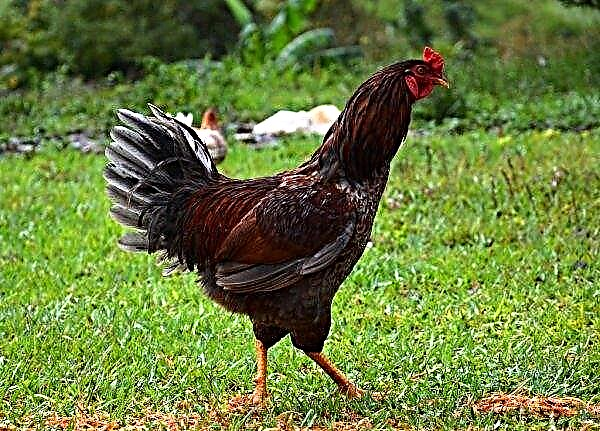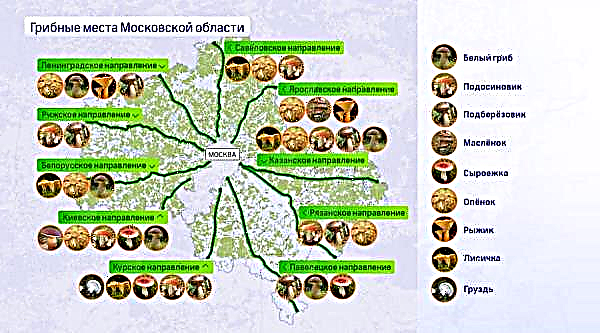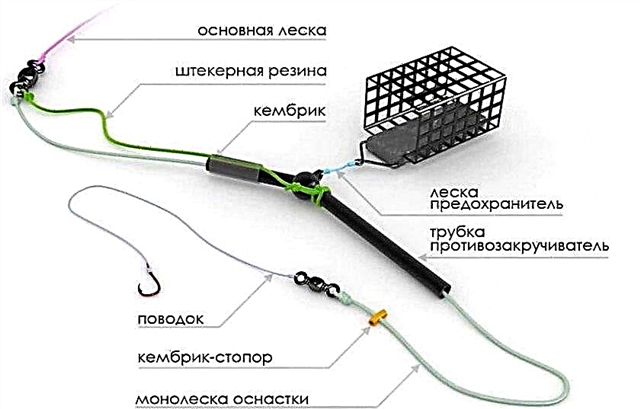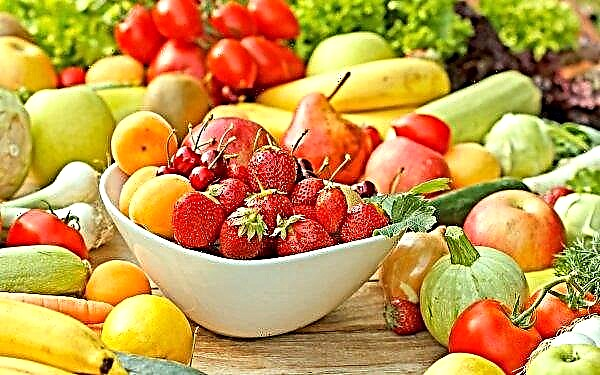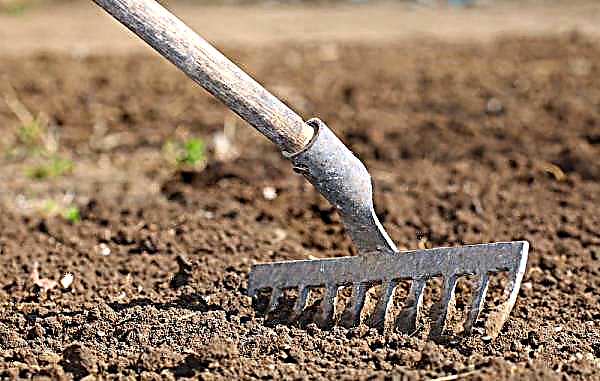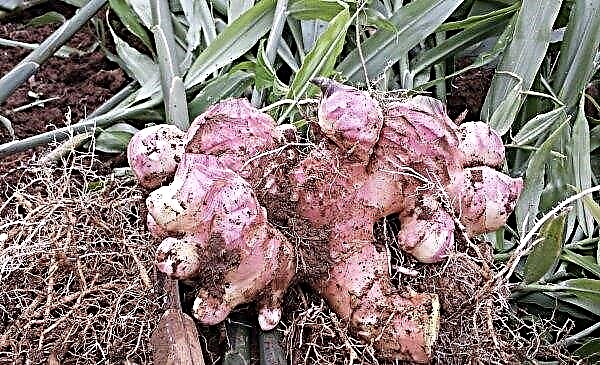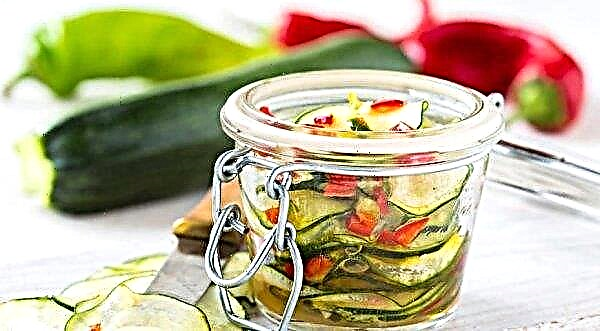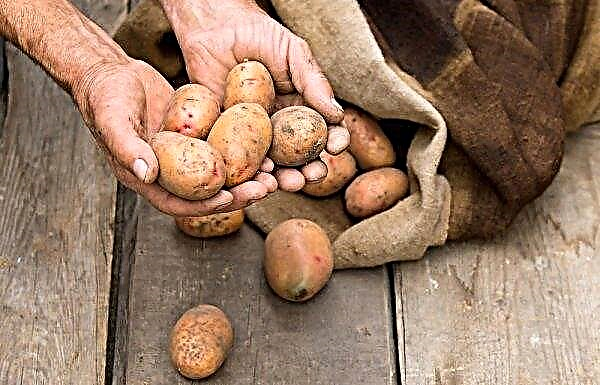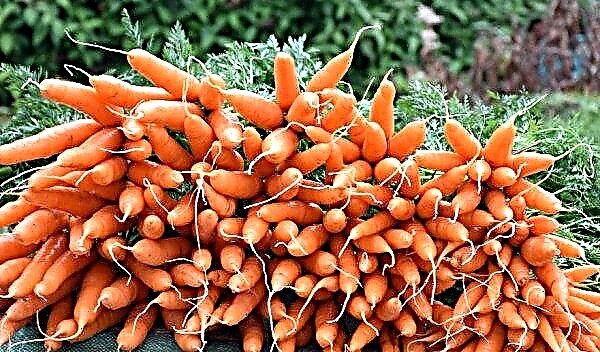Despite the relative youth, the Tsar's apricot has already managed to win the love of domestic gardeners. First of all, it is appreciated for its excellent indicators of frost resistance, thanks to which the plant can be grown not only in the southern regions of the Russian Federation, but also in the middle lane. What are the main advantages of the described culture and how to care for it in order to get a decent harvest - further in the article.
Description and distinctive qualities of Tsarsky apricot
Apricot Tsarsky is a fruit plant of early vegetation, bred by Russian breeders in 2004. The authors of the new variety were scientists of the Main Botanical Garden A.K. Skvortsov and L.A. Kramarenko, who, through free pollination of the seedling, carried out in three generations, were able to get a culture characterized by good frost resistance and excellent fruit quality. Apricot was included in the state register of fruit and vegetable plants in the same 2004.
Did you know? For a long time there was an opinion that the homeland of apricot is Armenia. However, scientists have established that the plant comes from the eastern regions of the Western Chinese People's Republic.
The tree of the described variety never grows large, no more than 3-4 m, and does not have a high growth rate. Crohn is characterized by medium branching, with an average rate of shoot formation. But the flowering of the culture is quite lush, plentiful, represented by large flowers of white color.
After flowering on a tree, medium-sized fruits weighing 20–23 g are formed, oval in shape with a thick pubescent skin. The color of the apricot is yellow, with a slight blush on the side most exposed to sunlight. The fruit pulp has a high juice content, quite dense, but at the same time tender, has a pleasant orange color.

On the palate, sweet apricots with pronounced acidity and a peach aftertaste, are characterized by a persistent apricot aroma. According to the assessment of the tasting commission for gustatory quality, the apricot earned 4.5 points out of 5. In the middle of the fruit, a small bone is placed, which is easily separated from the pulp.
Plant yields are average but stable. Gardeners collect about 30 centners from one hectare of apricot orchard. The culture begins to produce its first fruits 3-4 years after the planting material is planted. Apricots ripen early - in the last weeks of July. Due to the dense skin, they are distinguished by excellent keeping quality and transportability.
Advantages and disadvantages of the variety
- Summer residents engaged in the cultivation of the Tsar's apricot note a number of its positive qualities:
- fruiting stability;
- good frost resistance, up to –40 ° С;
- high palatability of fruits;
- excellent adaptation to poor climatic conditions;
- the versatility of apricots;
- unpretentiousness to soils;
- excellent keeping quality and transportability of fruits.

- Among the few disadvantages of the variety are:
- small sizes of apricots;
- average yields.
Important! The crop is characterized by alternating crop years with years of rest, which depend on the weather conditions of the growing region.
Grade Pollinators
The Tsarsky variety belongs to the category of self-pollinating plants for which pollinating neighbors are not required. In the flowering phase, crop pestles are pollinated by pollen of their own variety. But in some cases, to increase yield indicators and ensure the stability of fruiting, summer residents plant several apricots on the site, including other varieties.
Features of planting apricot
One of the main agricultural activities, on which the further development of the culture will largely depend, is the planting of a seedling. During the landing of planting material, you should choose the most suitable place and properly prepare the site.

Dates and place of landing
When cultivating apricot in the southern regions, planting a seedling is allowed in the fall or spring. When cultivating crops in the middle zone of the state, in particular in the Moscow region, planting specialists recommend conducting planting in the spring so that the plant can adapt and take root well during the summer.
For planting, you should choose the most spacious, bright, sunny area, protected from cold winds and drafts. The best option would be a place on a small hill, which after winter and thawing snow will quickly warm up by the sun.
Important! Apricot of the described variety does not tolerate shading very well; therefore, when planting it, one should avoid the proximity of large trees with a branched crown.
Selection of seedlings
The full development and fruiting of apricot will depend on the quality of planting material. First of all, it is recommended to buy seedlings in specialized markets or fruit and vegetable nurseries, which guarantees the variety of culture.

When choosing a material, you need to pay attention to such aspects:
- Roots. The root processes of the seedling should be well developed, strong, elastic, white on the cut, without signs of dryness, the presence of diseases or parasites, putrefactive areas.
- Bark. A sign of good planting material is a smooth, elastic bark, without dryness and roughness.
- Age. Plants that are under two years old should be chosen, as more adults do not take root well and bear fruit much later.
- Graft. The presence of an inoculative place indicates the variety and originality of the seedling. Its absence may indicate that the seedling was obtained from the seed, and therefore did not inherit all the parental properties.

Immediately before planting a plant in open ground, its root system is soaked for 30 minutes in a weakly concentrated solution of potassium permanganate, and then in any solution of growth activator.
Did you know? The use of apricot as a medicine in Russia began during the reign of Tsar Ivan III, who was the predecessor of Ivan the Terrible.
Site preparation
When planting a seedling in the spring, the seat is prepared in the fall. To do this, dig a recess 60 × 70 cm in size, and the soil extracted from the recess is mixed with humus and minerals.

If the soil on the site is too acidic, then it is deoxidized by adding peat, sand and dolomite flour. In the spring, planting is carried out when the ground is completely thawed, but the buds on the trees have not yet begun to bloom.
Step-by-step process
The planting process of the Tsarsky apricot seedling is practically no different from the planting of plants of another variety:
- A small layer of expanded clay, pebbles or broken brick, which will serve as drainage, is poured into the landing pit.
- On top of the drainage layer, part of the fertile soil is covered.
- A small knoll is made of soil, into which a wooden peg is inserted to support the seedling.
- A plant is placed on an earthen mound, its root processes are gently spread.
- The seedling is covered with soil so that the root neck remains on the surface.
- The earth of the trunk barrel is a little tamped, watered abundantly, using 20-30 liters of well-maintained, warm water.
- The soil around the plant is mulched with sawdust or peat crumbs.

Important! Some summer residents practice growing apricots from pits. In this case, the probability of growing a varietal tree is 50%.
Plant care
Apricot Tsarsky, although it is characterized by excellent adaptive qualities, requires good care and regular care for good fruiting and productivity, which consists in conducting a number of basic agrotechnical measures: watering, fertilizing, protection from pests and diseases.
Watering
Apricot Tsarsky prefers moderate humidity and negatively reacts to both prolonged drought and excessive watering. Irrigation activities should be carried out throughout the growing season. The first time the plant is watered in the phase of its flowering, the subsequent ones during the period of growth and ripening of the fruits. The last time during the season, the culture is moistened after a full harvest, before preparing for wintering.

When watering apricot, first of all, it is necessary to be guided by weather conditions. The soil around the tree should always be moderately moist. For irrigation, use settled, not cold water, with temperature indicators of about + 15 ° C.
After each moistening, the near-trunk circle is loosened, which makes it possible to saturate the soil with nutrients, enrich it with oxygen, thereby activating the growth of root processes.
Trimming and shaping the crown of a young apricot
Check out

In this case, the height of the plant from the soil should be no more than 90 cm. The procedure for cutting the shoots is repeated already in the second year of growth of the crop. To do this, remove all weak, dry branches, leave only 5-6 of the strongest and most healthy shoots around the circumference of the trunk.
Starting from the third year, at the beginning of spring, all shoots characterized by active growth are shortened. Without fail, remove all branches and buds located below half a meter from the soil. Every fall, sanitary pruning is performed, in which they get rid of dry, broken, weak, damaged, diseased branches. Older plants, in which the annual growth of shoots is less than 40 cm, are subjected to anti-aging pruning.
Important! After the pruning procedure, all places of the cuts, in order to avoid infection of the plant with infectious diseases, are covered with garden varieties or treated with chopped charcoal.
Top dressing
The list of mandatory apricot care procedures includes regular top dressing. During the growing season, the tree is fertilized 3-4 times. The first portion of nutrients is introduced in early spring, using mineral, nitrogen-containing products that contribute to the intensive growth of green mass.

In the summer, it is advisable to spray the tree with preparations based on potassium and phosphorus, the action of which is aimed at promoting the growth of fruits. Processing plants is carried out three times: before the flowering phase, during the formation of apricots, after harvesting. In autumn, after harvesting the fruit, the soil of the apricot orchard is enriched with organic means: humus, manure or compost.
Preparing a tree for winter
Despite the good indicators of frost resistance, apricot should be carefully insulated before wintering. Activities to prepare the plant for winter begin to be carried out in the fall.
For this:
- in autumn, loosen the soil of the near-trunk circle, moisten abundantly;
- the trunk and skeletal branches are whitened using a solution of water, lime, copper sulphate, powder clay and clerical glue;
- the soil around the trunk is mulched with a layer of peat;
- a few weeks before the alleged frosts, the trunk and skeleton of the plant are covered with breathable material, such as burlap or agrofiber.

To further protect the culture from rodents, a fine-mesh metal mesh is installed around the tree. It is especially important to take care of the warming of annual seedlings, since their underdeveloped root system can greatly suffer from frost. For the winter, the plants are completely covered by constructing a special canopy for them.
Did you know? Many people know that apricot kernels are widely used for the production of natural oils used in cosmetology. But the fact that they are an excellent raw material for making mascara is known to few.
Diseases and Pests
When growing apricot of the described variety, it is necessary to pay attention to the control and prevention of various ailments, pests. With too wet, rainy summers, the plant can be affected by one of the most dangerous fungal ailments - moniliosis, which first damages the flowers of the crop, and then penetrates into shoots and leaves. When the disease occurs, all affected areas are cut off, destroyed, and the tree is treated with a solution of fungicides, for example, “Horus” or “Quadrice”.
When the disease occurs, all affected areas are cut off, destroyed, and the tree is treated with a solution of fungicides, for example, “Horus” or “Quadrice”.
If there are cracks and damage on the cortex, the apricot can become a victim of the development of cytosporosis, the pathogen of which penetrates the cortex and begins to destroy it. For the treatment of ailment, all diseased parts are cut off, and the places of the cuts are treated with a 1% solution of copper sulfate.

Among the pests, plum aphids, spider mites and moths are the most dangerous to the crop. Effective measures against parasites are considered spraying the tree with special insecticidal drugs or folk remedies.
Processing the plant is carried out several times:
- in the early spring, before the onset of kidney swelling, they are sprayed with insecticides, for example, “Drug 30+”, which allows you to destroy wintering parasites;
- before flowering the culture it is treated with a solution of copper sulfate or "Horus";
- after flowering, the tree is sprayed with BI-58 solution;
- before the appearance of the fruit, the plant is treated with a solution of malathion.
In the fight against pests, a solution of Bordeaux fluid is widely used.
A number of preventive measures will help to avoid the appearance of parasites and the development of ailments:
- timely cleaning and destruction of fallen leaves, dry branches;
- regular loosening and weeding of soil;
- moderate watering and top dressing;
- whitewashing of the trunk and stem in spring and autumn;
- preventive spraying of wood with special solutions.
Harvesting and storage
The ripening of the fruits of the Tsar’s begins in late July and lasts until mid-August, at which time they are harvesting. Overripe apricots quickly lose their presentation, become loose and less tasty. Harvesting is carried out manually, in dry and warm weather.
Since apricots have a fairly dense structure and thick skin, they are stored in wooden or plastic containers in several layers. Royal apricots, although they have good longevity and transportability, however, under poor conditions they quickly deteriorate and lose their aesthetic and taste.

To preserve the fruits, they should provide comfortable conditions:
- a dry, cool, well-ventilated place, such as a basement or cellar;
- stable temperature values of about 0 ° C;
- relative humidity of 90–95%;
- a place that is reliably protected from direct sunlight.
Under such conditions, the fruit can be stored for about two months.
Did you know? The only contraindication to the consumption of apricot is diabetes. In other cases, the fruits are absolutely safe and are recommended for eating to all categories of consumers, including children and the elderly.
Apricot Tsarsky rightfully earned its name. It is characterized by high quality fruits, excellent frost resistance, good immunity and not moodiness to the climatic conditions of the region. Having provided proper care to the plant, even a beginner gardener, after 3-4 years will be able to get a decent harvest of fragrant and extremely tasty yellow fruits.


